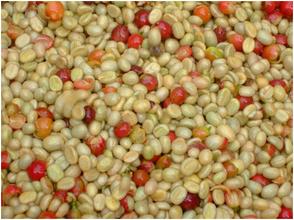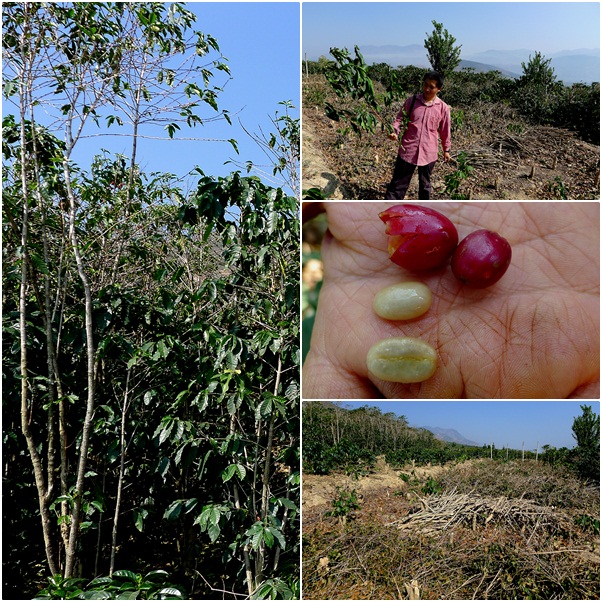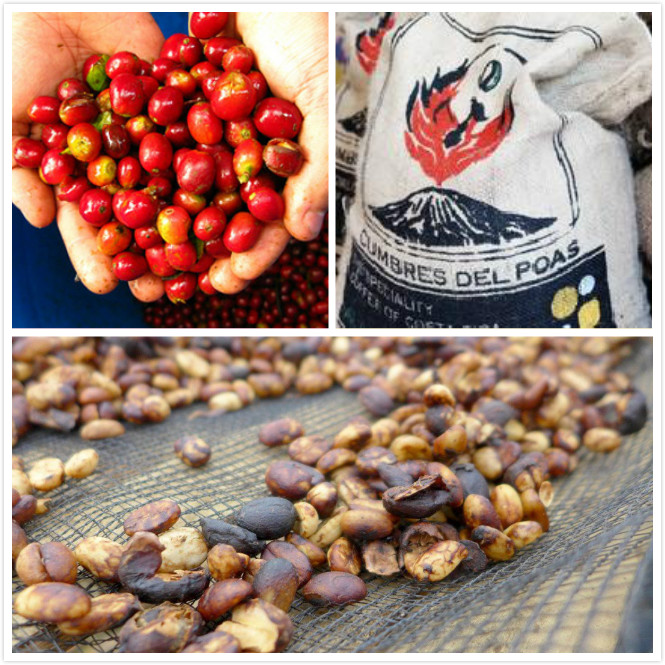American Fine Coffee Peruka Hamaka producing area Sunshine Cooperative easy to wash and treat Fine Coffee
Peru
Coffee is high-quality and balanced and can be used for mixed drinks.
Peru (Peru) is also a big coffee producer. Up to 98% of Peruvian coffee is grown in forest areas, and most producers are small farmers.
Peru has good economic conditions and a stable political situation, thus ensuring the good quality of coffee. However, there are many local problems, in addition to guerrilla warfare and drug trafficking, the emergence of cholera along the coast in the mid-1990s led to a further economic depression, and what is more, the annual inflation rate reached 7000%.
In the mid-1970s, Peruvian coffee production was about 900000 bags a year, and then steadily increased to about 1.3 million bags a year. Although private exporters buy coffee in remote areas through middlemen, the main market is still monopolized by the government. Then came the private Comera de Exportadores de Cafe del Peru, which is committed to improving the quality of coffee. Its primary task is to set standards and eliminate inferior products, thus creating an atmosphere of quality supremacy. This positive move heralds a bright future for the coffee industry. Since then, rising prices have encouraged farmers to actively grow coffee rather than cocoa, the region's traditional cash crop.
Peru's finest coffee is produced in Chanchmayo, Cuzco, Norte and Puno. Most Peruvian coffee is grown under natural conditions, but it is also difficult to confirm the cultivation of all coffee trees. Coffee grown under natural conditions costs 10% to 20% more than others, and farmers may not have the money to buy chemical fertilizers and pesticides in terms of poverty, but it is really difficult to confirm all the coffee.
The quality of Peruvian coffee is comparable to that of any kind of coffee in Central or South America. The high quality coffee produced by Peru is shipped to Germany for blending and then to Japan and the United States, which also illustrates its high standard of quality.
Sunshine Cooperative (SOL Y COOP) was established in 2005, located in the Cajamarca coffee producing area of Peru (Peru) in South America, the eastern mountains of the Andes Mountains, the cooperative is surrounded by natural primeval rainforest, a large amount of fine sand provides a well-drained soil, the daily afternoon intermittent rain brings abundant Rain Water and moisture, and native animals and plants create natural shade and natural organic matter to increase soil fertility. At the same time, with the funding and support of the USAID and the Hong Kong Caritas Caritas Jaen technical team, the Sunshine Cooperative has established its foundation steadily, but the members of the cooperative are not spoiled by the perfect background. They continue to recruit local aborigines to join the cooperative, help small farmers' life, and continue to carry forward the mysterious and wonderful unique flavor and charming cultural customs of Peruvian coffee.
Sunshine cooperatives are committed to protecting their land and environment, believing that natural traditional farming methods are sustainable, using only manual harvesting and processing, and abandoning convenient mechanized processes. their efforts not only passed organic certification, rainforest certification and fair trade certification in 2006 and 2007, but also set up sunshine cafes in various places in 2008. Continue to spread the cooperative's high-quality coffee and its concept, and strive for the most important health protection and coffee sharing truth for all future generations and lives. This kind of coffee can set off the bright and beautiful honey lemon fragrance when roasted lightly and moderately, then turn out almonds and milk chocolate, and then the sweet candied lemons refresh the taste window on the tip of the tongue again. City-baked beans enrich the smell, with aromas of jasmine, spices, tropical fruits, honey, vanilla, candied fruit and caramel brought out by intense bitter sweet chocolate, balanced with crisp acidity and creamy taste.
Peru FTO SOLY CAFE
Country: Peru
Producing area: Kahamaka
Altitude: 1800-2000 m
Treatment: washing
Variety: Tibika, Kaddura, Bourbon, Kaduai
Producer: sunshine Co-operative
Flavor: nuts, caramel, cream

Important Notice :
前街咖啡 FrontStreet Coffee has moved to new addredd:
FrontStreet Coffee Address: 315,Donghua East Road,GuangZhou
Tel:020 38364473
- Prev

How much is a jin of cranberries? Washing AA cranberries at Jiatuji treatment Plant in Nyeri, Kenya.
Kenya Nyeri production area Jiatugi water washing AA cranberries located in East Africa Kenya is one of the major coffee producing countries, about 6 million people in the country are engaged in the coffee industry, mostly in the form of a combination of small farmers and cooperatives. Coffee trees in Kenya are mostly planted at 1400-2000 meters above sea level, and the growth areas include Ruiri,Thika, Kirinyaga and Mt.KenyaWes.
- Next

American Coffee boutique Manor Coffee Treasure from the hometown of the Giant Turtle Galapagos Islands
A coffee treasure from the hometown of giant turtles in the Galapagos Islands, this coffee treasure is of excellent quality and is grown without any chemicals. Coffee is grown in San Cristobal (Saint Crstbal). St. Cristobal is a larger island in the Galapagos Islands (Galapagos Islands) and the only one in the archipelago with plenty of fresh water. In the
Related
- Does Rose Summer choose Blue, Green or Red? Detailed explanation of Rose Summer Coffee plots and Classification in Panamanian Jade Manor
- What is the difference between the origin, producing area, processing plant, cooperative and manor of coffee beans?
- How fine does the espresso powder fit? how to grind the espresso?
- Sca coffee roasting degree color card coffee roasting degree 8 roasting color values what do you mean?
- The practice of lattes: how to make lattes at home
- Introduction to Indonesian Fine Coffee beans-- Java Coffee producing area of Indonesian Arabica Coffee
- How much will the flavor of light and medium roasted rose summer be expressed? What baking level is rose summer suitable for?
- Introduction to the characteristics of washing, sun-drying or wet-planing coffee commonly used in Mantenin, Indonesia
- Price characteristics of Arabica Coffee Bean Starbucks introduction to Manning Coffee Bean Taste producing area Variety Manor
- What is the authentic Yega flavor? What are the flavor characteristics of the really excellent Yejasuffi coffee beans?

